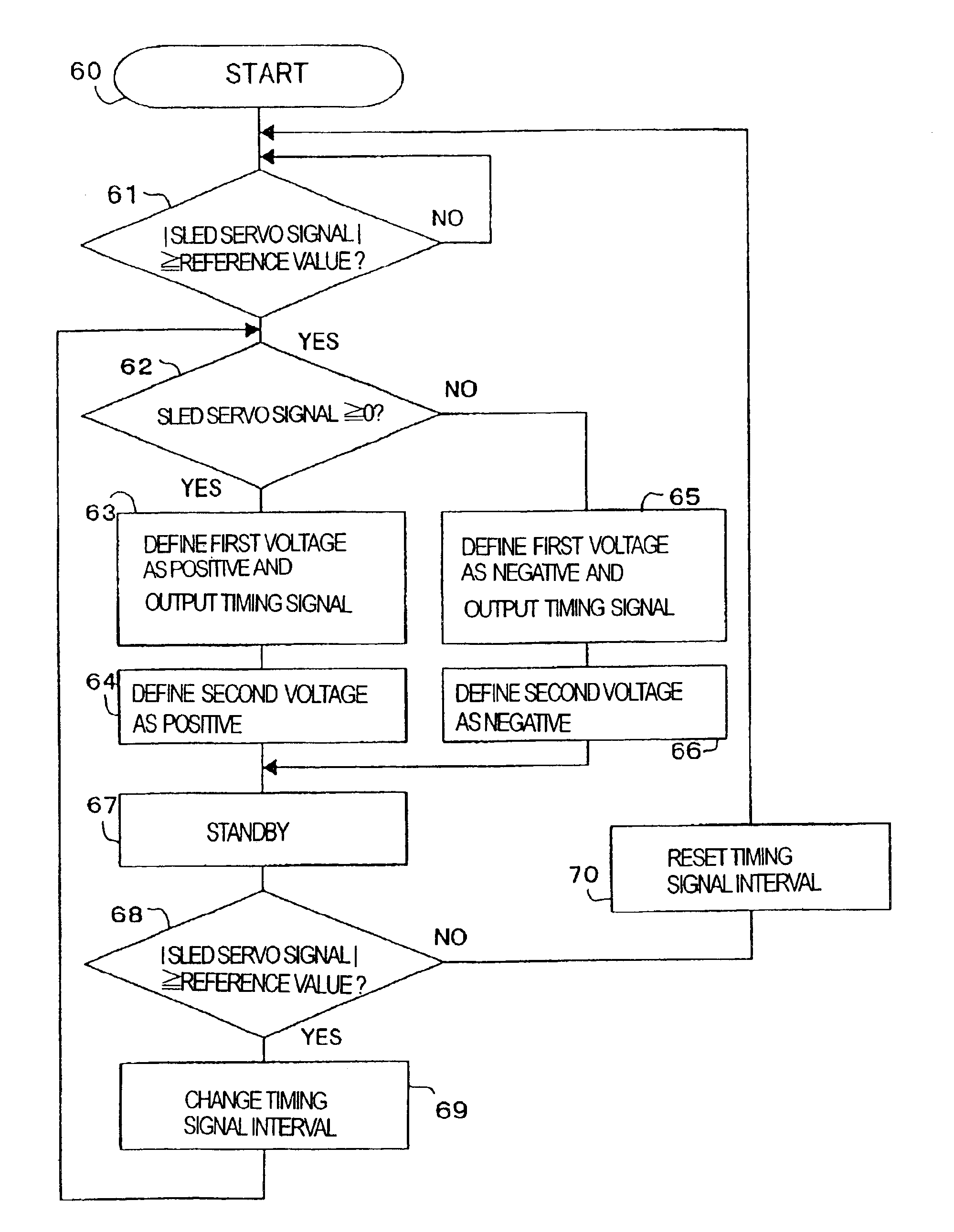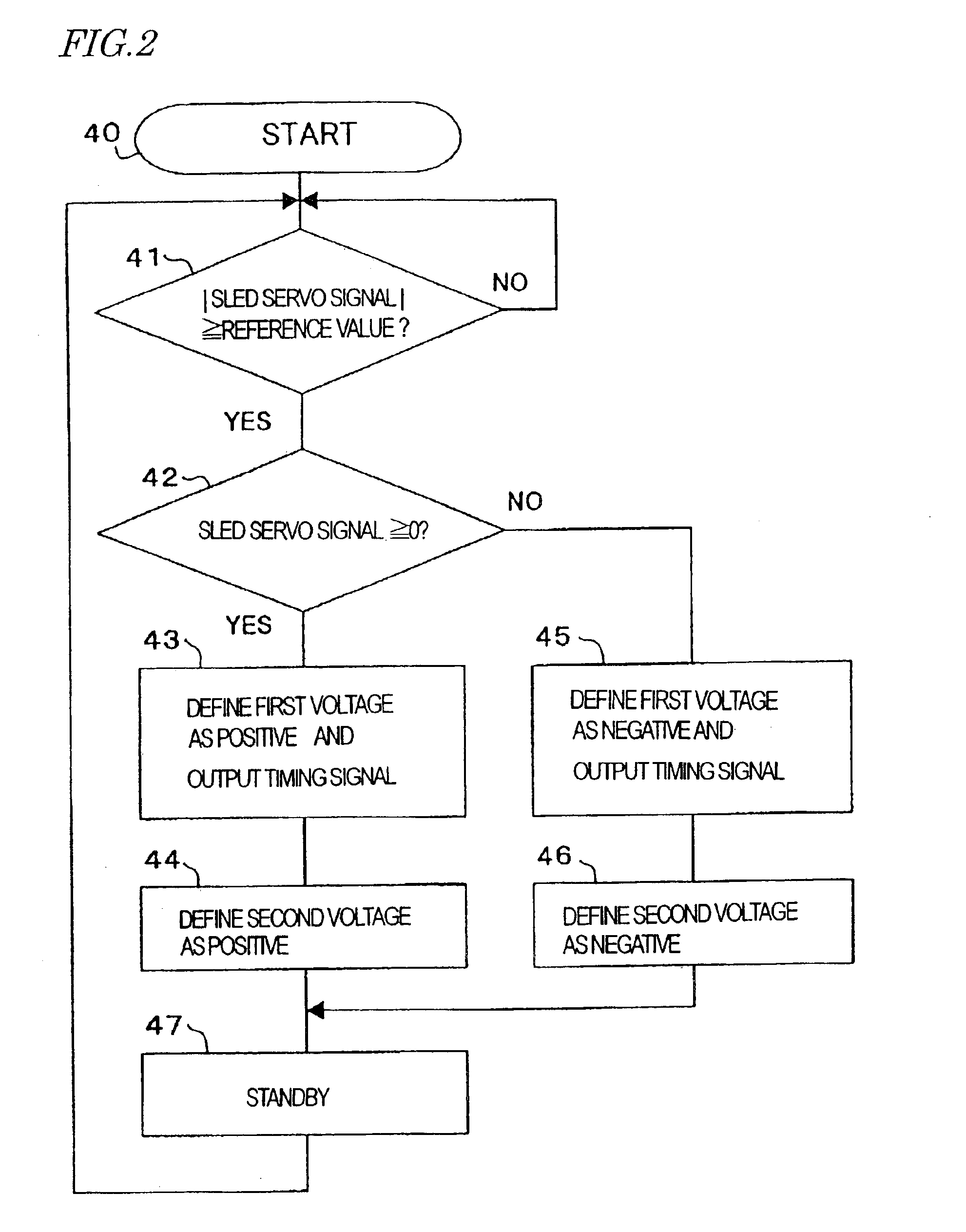Disk drive including means for preventing rotation
a technology of disk drives and rotating means, which is applied in the direction of recording information on magnetic disks, instruments, and recording on them, can solve the problems of difficult control of the stop angle of the rotor b>94, and the difficulty of a dc motor to meet these requirements fully, and achieve the effect of stabilizing and accurate positioning control
- Summary
- Abstract
- Description
- Claims
- Application Information
AI Technical Summary
Benefits of technology
Problems solved by technology
Method used
Image
Examples
embodiment 1
[0080]Hereinafter, a motor controller according to a first specific preferred embodiment of the present invention will be described with reference to the accompanying drawings.
[0081]FIG. 1 schematically illustrates the main section of an optical disk drive 1 including the motor controller of the first preferred embodiment. The optical disk drive 1 may be used to read and / or write information from / on an optical disk 2 such as a DVD-RAM, on which spiral tracks are formed.
[0082]The optical disk drive 1 includes a rotating / driving mechanism for use to rotate the optical disk 2 that has been mounted thereon. The rotating / driving mechanism includes spindle motor 9, turntable 25 and driver (not shown). The turntable 25 is fitted with the shaft 24 of the spindle motor 9 to mount the optical disk 2 thereon. The driver is used to drive the spindle motor 9.
[0083]The optical disk drive 1 further includes optical head (or optical pickup) 23, optical head moving mechanism 12 and DC motor 5. The o...
embodiment 2
[0140]Hereinafter, a motor controller according to a second specific preferred embodiment of the present invention will be described with reference to the accompanying drawings.
[0141]FIG. 5 schematically illustrates the main section of an optical disk drive 1a including a motor controller according to the second preferred embodiment. In FIG. 5, each component of the optical disk drive 1a having substantially the same function as the counterpart of the optical disk drive 1 is identified by the same reference numeral.
[0142]Unlike the optical disk drive 1 of the first preferred embodiment described above, the optical disk drive 1a of the second preferred embodiment includes a control unit 19a having a timing changer 32. Thus, the following description of the second preferred embodiment will be focused on the operation of the control unit 19a.
[0143]As shown in FIG. 5, the control unit 19a includes the timing generator 20 and the timing changer 32. The timing changer 32 changes the inte...
PUM
| Property | Measurement | Unit |
|---|---|---|
| stop angle | aaaaa | aaaaa |
| stop angle | aaaaa | aaaaa |
| velocity | aaaaa | aaaaa |
Abstract
Description
Claims
Application Information
 Login to View More
Login to View More - R&D
- Intellectual Property
- Life Sciences
- Materials
- Tech Scout
- Unparalleled Data Quality
- Higher Quality Content
- 60% Fewer Hallucinations
Browse by: Latest US Patents, China's latest patents, Technical Efficacy Thesaurus, Application Domain, Technology Topic, Popular Technical Reports.
© 2025 PatSnap. All rights reserved.Legal|Privacy policy|Modern Slavery Act Transparency Statement|Sitemap|About US| Contact US: help@patsnap.com



